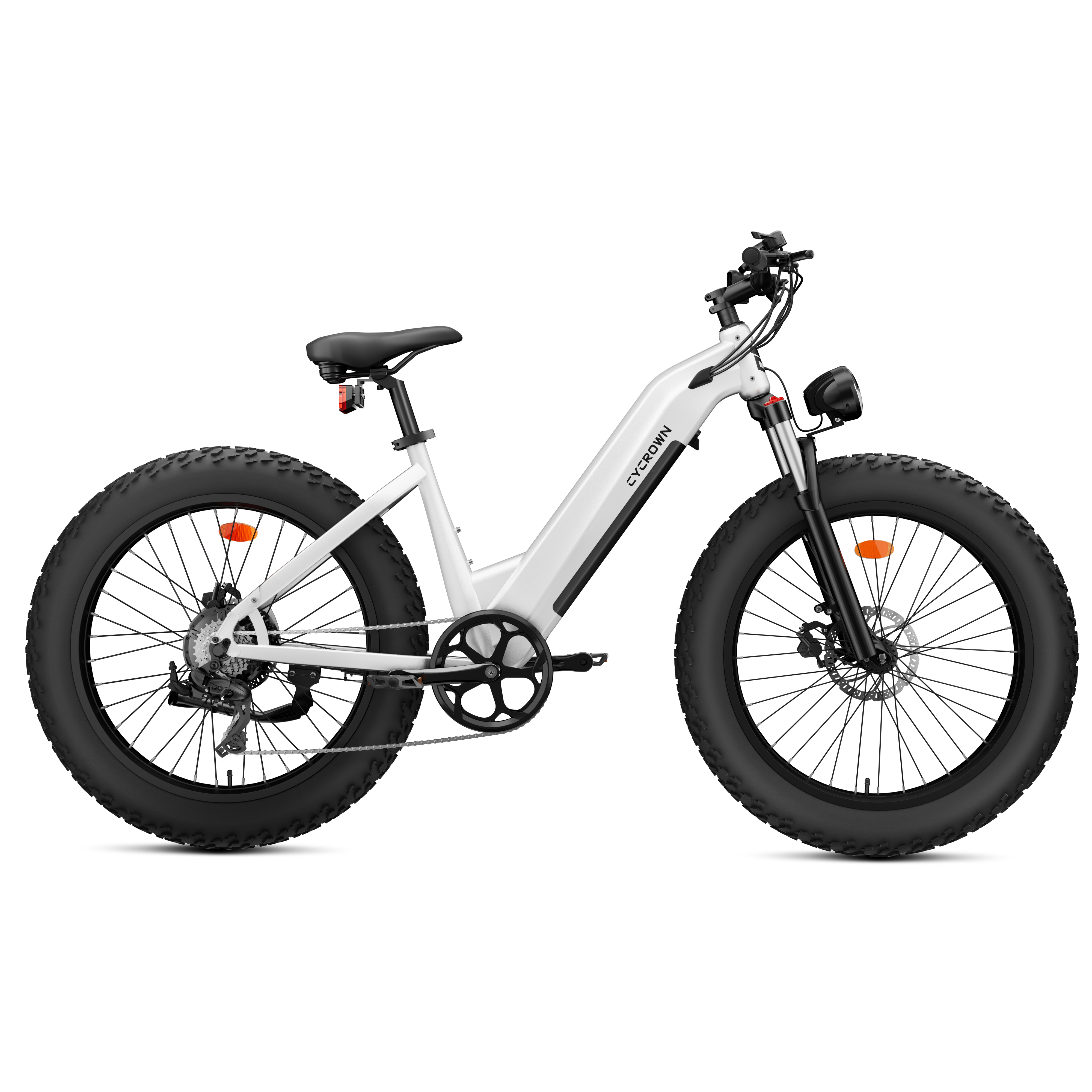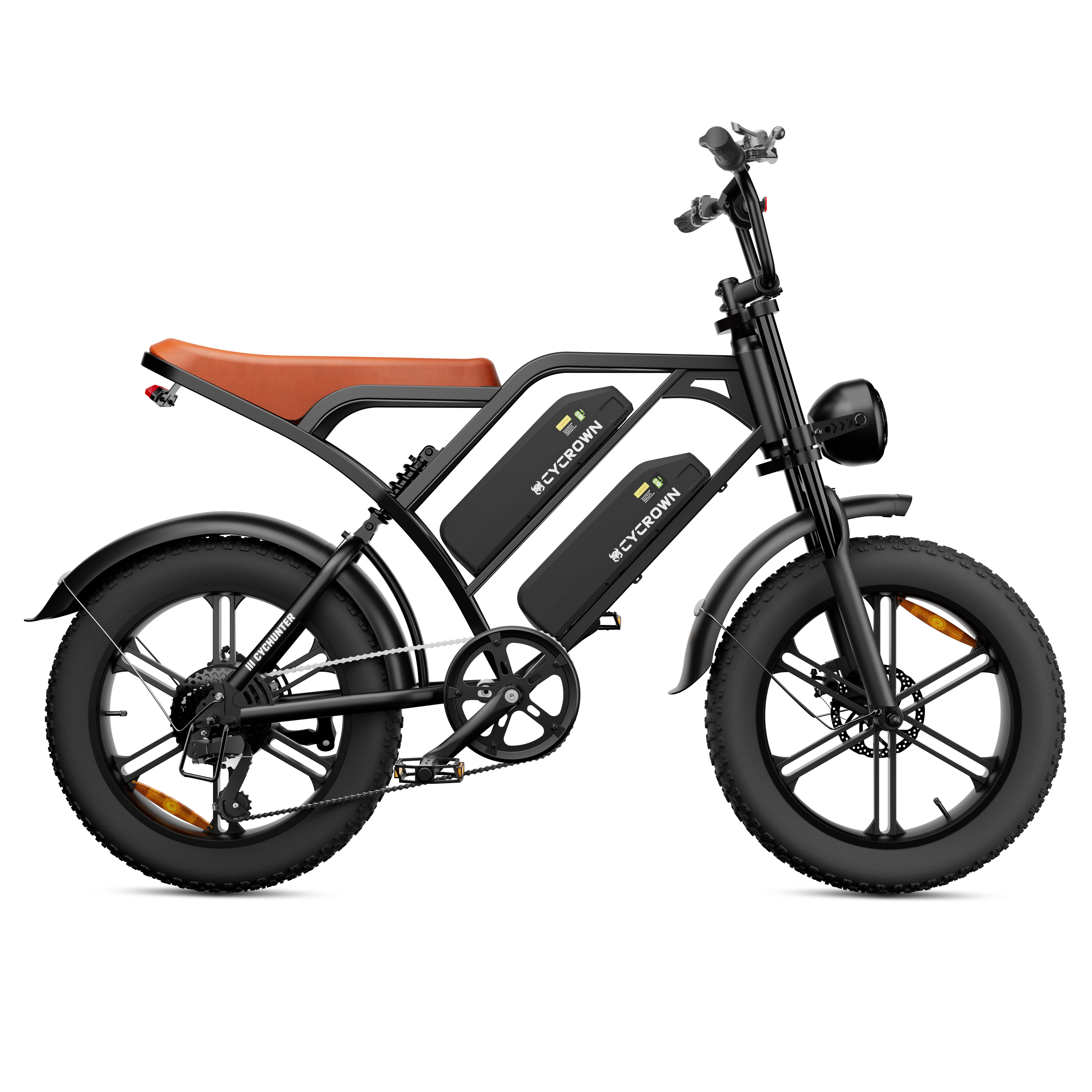Electric bikes, or e-bikes, have seen a notable rise in popularity. This surge in usage highlights the necessity of established laws to ensure safety and standardization. This blog post sheds light on existing regulations and explores the expected or possible new legislative changes in 2024 and beyond.
US Federal Laws on E-Bikes
Under the Consumer Product Safety Act, a low-speed electric bicycle is defined as a vehicle that meets the following conditions: it has two or three wheels, fully operable pedals, an electric motor that does not exceed 750 watts (1.01 horsepower), and a maximum speed of 20 miles per hour (32 kilometers per hour) when powered solely by the motor and ridden by a rider weighing 170 pounds on a flat surface.
This classification subjects compliant electric bicycles to the regulatory oversight of the Consumer Product Safety Commission (CPSC) rather than categorizing them as motor vehicles.
Classification of E-Bikes in the US
The US categorizes e-bikes into three distinct classes based on their motor capabilities and speed limits:
|
Feature |
Class 1 E-Bikes |
Class 2 E-Bikes |
Class 3 E-Bikes |
|
Motor Assistance |
Only when pedaling |
Even without pedaling |
Only when pedaling |
|
Speed Limit |
20 mph |
20 mph |
28 mph |
|
Main Usage |
Enhances human power, ideal for tackling hills and covering long distances |
Allows effortless assistance, perfect for commuting or aiding those with physical limitations. |
Preferred by seasoned cyclists, perfect for extended commutes |
|
Design Purpose |
To augment, not replace human effort |
To provide an option to cycle without pedaling |
To offer faster transport while involving active participation |
|
Typical User |
Those seeking a slight boost |
Those needing rest or assistance without strain |
More experienced cyclists or long-distance riders |
So far, more than half of the US states have adopted the 3-tier classification system for e-bikes. However, there remains significant variation in e-bike regulations at the state level, impacting their usage. These differences include where e-bikes can be ridden, who is permitted to ride them, and what safety measures must be followed.
Examples of State Laws on Electric Bikes
State laws on e-bikes in the United States exhibit significant variation. In Arkansas, e-bikes are categorized into Classes 1, 2, and 3 without specific age restrictions. However, riders under 16 must wear helmets. E-bikes are generally allowed wherever traditional bicycles are permitted, although local restrictions may apply.
California's approach includes a classification system where Class 1 and 2 riders must be at least 16 years old, and Class 3 riders need to be 18 or older. Helmets are required for riders under 18. While e-bikes are generally allowed on bike paths and lanes, local regulations may introduce specific restrictions.
New York defines three classes of e-bikes, with helmet requirements for all Class 3 riders and those under 18. The accessibility of e-bikes on roads, bike lanes, and paths varies depending on the class. North Carolina also treats e-bikes as bicycles, mandates helmets for riders 16 and under, and allows e-bikes on roads, in bike lanes, and on certain trails.

These examples illustrate the diverse approaches states take toward e-bike regulation, reflecting a balance between safety concerns and the growing popularity of e-bikes as a transportation method. Riders are encouraged to check local laws and regulations to ensure compliance with the specific requirements of their state or municipality.
E-Bike Law Updates at the Federal Level in 2024
In 2024, significant updates regarding electric bicycles (e-bikes) could emerge if legislative proposals like H.R.1685 - E-BIKE Act are passed. These updates may introduce financial incentives and regulatory standards, significantly impacting the e-bike landscape.
One potential change under consideration is the introduction of a tax credit, allowing individuals to claim up to 30% of the cost of a qualified electric bicycle, capped at $5,000 per e-bike. This proposed tax incentive aims to enhance e-bike accessibility, fostering a shift towards cleaner, more energy-efficient transportation modes.
Moreover, the legislation might establish precise definitions and standards for qualified electric bicycles, categorizing them into three classes based on motor capabilities and speed limits. Such standards are essential for ensuring safety and consistency across the e-bike industry.
Additionally, proposed updates could include age restrictions, such as prohibiting the operation of any class of e-bikes by individuals under 12. From July 1, 2025, there might also be a requirement for riders without a valid driver's license to possess a skills waiver and a valid state-issued ID while operating an e-bike. These measures aim to bolster safety and promote responsible e-bike use in various environments.
E-Bike Law Updates on the State Level in 2024
We use California as an example to provide insights into the new e-bike law changes in the US for 2024.

Assembly Bill No. 2234
Introduced by Assembly Member Boerner on February 8, 2024, Assembly Bill No. 2234 aims to enhance the safety, training, and regulation of electric bicycles. Key provisions include safety and training programs by the California Highway Patrol, with completion by June 30, 2025, granting a skills waiver.
Notably, the bill restricts children under 12 from operating any class of e-bike and, from July 1, 2025, requires e-bike operators without a driver's license to carry a skills waiver and a valid state-issued ID. These changes aim to create a more regulated e-bike environment, prioritizing safety and responsibility.
For consumers, the bill introduces new prerequisites, particularly affecting younger riders and those without a driver's license. Compliance will require completing training programs and carrying necessary documentation. This reflects a growing emphasis on safety and training as e-bikes gain popularity.
Assembly Bill No. 1909
Assembly Bill No. 1909, the Bicycle Omnibus Bill, introduces key changes to the Vehicle Code for bicycles and e-bikes effective January 1, 2024. The bill aims to align with transportation trends and enhance road safety.
Key provisions include lifting the blanket prohibition on Class 3 e-bikes on certain trails, allowing local authorities to regulate e-bike usage in specific areas. The legislation also extends pedestrian traffic light permissions to cyclists and requires motorists to switch lanes when overtaking bicycles, where possible. Additionally, it prevents local jurisdictions from mandating bicycle licenses, simplifying regulations for cyclists.
These updates reflect California's commitment to safer, more inclusive roadways and the growing popularity of e-bikes.
The Bottom Line
Stay updated on federal and state e-bike regulations to ensure compliance and benefit from potential incentives. Legislative changes can impact how and where you use your e-bike, along with your safety and legal responsibilities. Regularly check for updates in your state and nationwide to stay informed.










